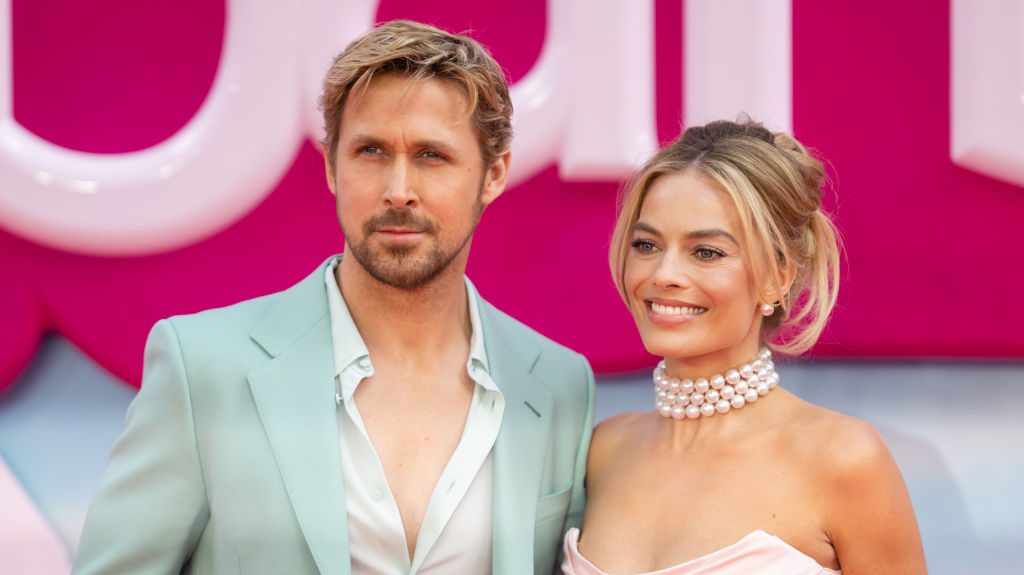
Why Hasn’t Margot Robbie Been Nominated for the Oscar While Ryan Gosling Has?
The surprise opens the door to the discussion about the lack of representation of women in the industry
This week, social media is ablaze after the announcement of the nominations for the 96th edition of the Oscars, the most coveted awards in Hollywood. Margot Robbie, the lead actress of ‘Barbie,’ the film that has stirred passions both within and outside mainstream culture this year, has reportedly not received any nominations for her performance this year, unlike Ryan Gosling, who plays Ken in the fiction.
The collective outrage surrounding this news points to the significance of the film itself: how even when women are protagonists, they are not treated as such. How gender becomes, in both cinema and real life, a factor that gives more or less value to the work of actors. And not only actors, because their director, Greta Gerwig, has also not been nominated in the Best Director category (where only one woman, French director Justine Triet for ‘Anatomy of a Fall,’ is nominated this year).
This news has partly overshadowed the fact that, despite these awards being held for almost a century, this year marks the first time a Native American woman has received a nomination for Best Actress: Lily Gladstone for ‘The Moonkillers.’ These events lead us to take a brief look at the lack of representation of women in cinema and awards, to understand why and how the most famous nominations in the film industry are distributed.
Women in Cinema, Where?
After the surprise in the Barbie nominations, Gosling himself has expressed his disappointment with the news that his colleagues, except for America Ferrera, do not appear in the main categories they had applied for.
«There is no Ken without Barbie, and there is no Barbie movie without Greta Gerwig and Margot Robbie, the two people most responsible for this history —making, globally celebrated film. No recognition would be possible for anyone on the film without their talent, grit, and genius. To say that I’m disappointed that they are not nominated in their respective categories would be an understatement,» Gosling communicated to several media outlets, as Ferrera did to Variety.
😔 Ryan Gosling está muy DECEPCIONADO por la NO nominación de Margot Robbie y Greta Gerwig a los #PremiosOscar 🤬 Las redes sociales han ESTALLADO porque solo han nominado a «KEN» y no a «BARBIE» 💥
😳¿Qué OPINAS sobre esto? pic.twitter.com/psDTPYCZIh— LOS40 (@Los40) January 24, 2024
The anger is not unjustified because the lack of representation of women in cinema is broad and real. This is demonstrated by successive studies from the Center for the Study of Women in Television and Film at the University of San Diego in California. According to their report ‘It’s a Man’s (Celluloid) World,’ in 2022, only 33% of films had female protagonists. Women accounted for only 38% of main characters and 37% of those with dialogue throughout the film. 80% included more male characters than female characters.
Another interesting fact to understand the dynamics at play in award nominations is that there are also reports showing, on the one hand, that male critics outnumber female critics in all job categories. It has also been shown that male critics give higher quantitative average ratings to films with male protagonists. These films are usually more successful at the box office, but that’s because they receive a higher budget.
Looking at the field of direction, in 2023, women continued to be notably underrepresented as directors, accounting for only 16% of those working on the 250 top-grossing films and 14% on the top 100.
Hierarchy in Representation
Female representation does not precisely improve when other identity elements come into play, such as race and ethnicity. Black women make up only 21.6% of main characters in 2022, while Latinas barely reached 12.8%, and Asians 10%. In 2023, only one African American actress had been nominated for the Oscars, and it was in the supporting category: Angela Bassett for «Wakanda Forever.» In fact, Halle Berry is the only black woman in history to win an award for Best Leading Actress.
This asymmetry is also seen in the age of actresses: women who have dialogue in films go from making up 36% of characters when they are 30 years old to 14% when they are 40. And let’s not forget about the lack of body diversity: the representation of slim female characters is three times higher than that of male characters. Aesthetic pressure is greater in youth, as more than half of teenage girls on screen are «slim or extremely slim.» These are data from a study analyzing the 100 highest-grossing films of 2016, which also shows that 54.8% of young girls aged 13 to 20 on screen were «slim,» compared to 42.4% of those aged 21 to 39 and 18.6% of those aged 40 to 64.
In short, Margot Robbie’s surprise, who has at least received a nomination for Best Picture as a producer, opens the door to a hidden debate about the lack of visibility of women and female characters in cinema. It highlights how a film can be the movie of the year, addressing precisely the everyday and structural gender discrimination, but the women who brought it to life initially do not receive effective recognition for it (or more overtly: the male co-star receives it). Although it seemed to be a favorite, it has been surpassed in nominations in this edition by Oppenheimer — a film starring a man (Cillian Murphy), directed by a man (Christopher Nolan), and criticized for the lack of development of female characters. That and no woman speaks in the first 20 minutes.